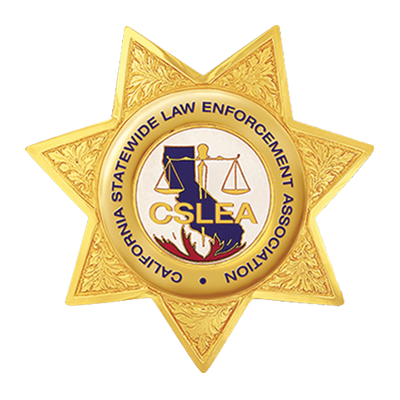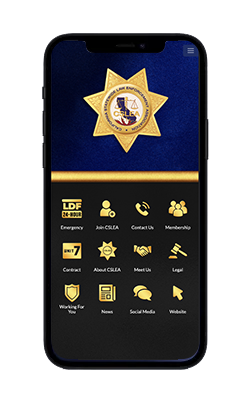- Winter Storm Heading For N.Y.
- Snowstorm Forces Hundreds Of Flight Cancellations
- Major Snowstorm Slams The Midwest
- Washington Shuts Down Ahead Of Fierce Snowstorm
 Given the headlines this week, it is easy to understand why March 3-9, 2013 is “National Severe Weather Preparedness Week,” but here in sunny California should we really be truly interested?
Given the headlines this week, it is easy to understand why March 3-9, 2013 is “National Severe Weather Preparedness Week,” but here in sunny California should we really be truly interested?
“You bet,” said Courland Ellis. Ellis is an Emergency Services Coordinator (ESC) at the California Emergency Management Agency’s (Cal EMA) California State Warning Center (CSWC). He is also the treasurer of the Fire Marshal and Emergency Services Association (FMESA) and member of the California Statewide Law Enforcement Association. “We’re not buried in 12 feet of snow, under 10 feet of flood water or being blown away by a tornado, so this is a perfect time to prepare for severe weather. “
Cal EMA has joined the Federal Emergency Management Agency (FEMA) and the National Oceanic Atmospheric Administration (NOAA) and is calling upon all of us to “Be a Force of Nature,” by being prepared.
Nearly every year, California gets hit hard by winter storms, thunderstorms, a tornado or two, severe thunderstorms, flooding and drought. Severe weather can often mean power outages, injuries and death.
“At Cal EMA we’re reminding residents to know their severe weather risks and to be prepared,” said Ellis. “Having the right items on hand and knowing in advance what you would do in an emergency weather situation allows you to keep your family and even your neighbors safe from harm.”
Ellis tackles severe weather on a much grander scale. As Californians batten down the hatches, he and all the Emergency Services Coordinators and Emergency Notifications Controllers at Cal EMA’s Warning Center stay afloat in a flood of information. The California State Warning Center (CSWC) operates 24 hours a day. This is where emergency alerts and warnings are received and sent. Its contact list? Impressive.
“The CSWC makes immediate notifications to the affected county warning points, state and federal agencies and private enterprises that would have an immediate need to respond to the incident,” said Ellis.
These include, but are not limited to the California Highway Patrol (CHP), California National Guard (CNG), California Department of Public Health (CDPH), Emergency Medical Services Authority (EMSA), American Red Cross (ARC), California Utilities Emergency Association (CUEA), California Emergency Management (Cal EMA) Leadership and Duty Officers, Governor’s Office Senior Staff, Cabinet Secretaries and Undersecretaries, and the Federal Emergency Management Agency (FEMA).
Notifications are also then made to directors, chief deputy directors and 24 hour points of contact of state departments and boards and commissions based on the criticality of the event. Notifications also go out to legislative members and their staff regarding their constituents affected by a critical event or disaster.
The California State Warning Center works hand in hand with the National Weather Service to notify each affected county warning point via CALWAS or landline and provide a briefing of the Watch or Warning issued by the National Weather Service. The National Weather Service issues several forms of weather bulletins: Severe Weather Bulletins, Severe Weather Statements, Special Weather Statements, Tornado, Hail or Thunderstorm Bulletins, and Watches or Warnings.
A Watch means meteorological conditions are such that the forecast condition may occur; a Warning means the condition has been reported or meteorological conditions are such that occurrence of that phenomenon is in progress or is imminent.
Some of the weather products the California State Warning Center works with and makes notifications on to include:
- Winter Weather and Wind Watches / Warnings
- Flood and/or Thunderstorm Watches/Warnings
- Tornado and/or Waterspout Watch/Warnings
- Fire Weather (Fire Weather Watch / Red Flag Warnings)
- Temperature (Excessive Heat / Freeze Watches or Warnings)
During times of severe and/or unusual weather, events may require coordination beyond Cal EMA with state and federal partners. In addition, as supporting documents to the California State Emergency Plan, contingency plans for excessive heat emergencies and extreme cold weather are maintained and monitored by Cal EMA along with the State Warning Center. Upon activation of these plans, communication/coordination with the National Weather Service (NWS), key response agencies, and local authorities may be necessary. Cal EMA works with the National Weather Service to coordinate conference calls with key state and federal agencies.
The mission of the CSWC is to provide efficient and effective communications during non-disaster, disaster, and recovery periods. The CSWC serves as the 24-hour contact point for the state of California alerting and notifying local governments, state officials and the federal government of natural or human caused emergencies ensuring a timely and appropriate response to incidents by emergency personnel.
It is a lot to take in. But if people work this hard in order to warn and prepare Californians when it comes to severe weather, shouldn’t residents do their part as well?
“The goal is to be severe weather ready,” said Ellis. “We concern ourselves with it 365 days a year, that’s our job, we’re just asking residents to give it some thought this week, during National Severe Weather Preparedness Week. It can be life saving, and if not, at the very least it’s going to make you a lot more comfortable as you weather the storm.”



